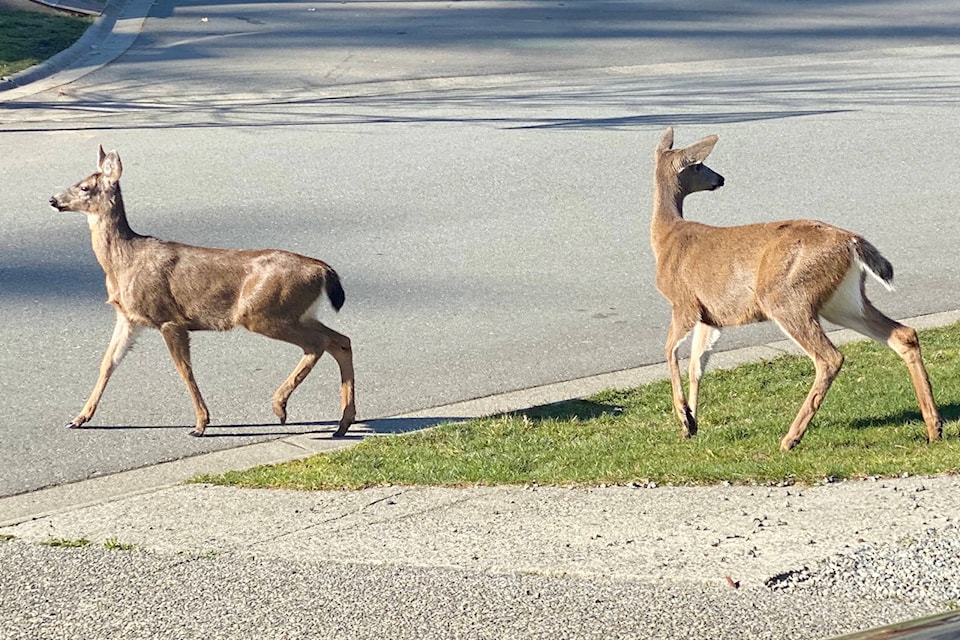September brings more than back to school. As last week’s fog mixed with smoky skies and rain, it was a good reminder that fall also brings visibility challenges for drivers and cyclists.
“Here in Esquimalt and Victoria, fall and winter bring a darker, often wetter commute, at the very times of day our urban deer also tend to be more active,” says Kristy Kilpatrick, with the Urban Wildlife Stewardship Society.
And while that glare from the headlights hitting wet roads can be blinding for us, it can also disorient wildlife, causing animals to freeze or act unpredictably.
Here are a few Dos and Don’ts for fall driving with our four-legged friends in mind:
- DO slow down, especially in areas deer are known to frequent, keeping your eyes on high alert, especially at night.
- DO expect more if you see one. Deer are rarely alone, so if you see one, expect others to follow behind or dart out at the last minute. And remember the confusion your headlights can cause.
- DO continue watching for fawns. Young deer may not recognize vehicles as a threat, so may not immediately move out of the way. Slick pavement can also cause them to slip and fall in front of your vehicle when they try to jump away.
- DON’T swerve if a collision seems imminent. Remove your foot from the accelerator and brake lightly, keeping the vehicle straight. Insurance adjusters say more car damage and personal injury is caused when drivers swerve to avoid collision with wildlife.
- DO pick up an awareness sign. Alert other drivers and cyclists to the possibility of deer, and the need to slow down and watch for them in your neighbourhood. Esquimalt residents can pick up a sign from municipal hall.
Research efforts continue
In addition to ongoing seasonal awareness campaigns, the Urban Wildlife Stewardship Society’s immuno-contraceptive research continues in Oak Bay, with the results informing communities like Esquimalt in their deer management plans.
The team is currently providing boosters to deer who received the IC injections last year and providing inoculations to new deer this year, Kilpatrick says.
Rutting season is on the way
While fawning season is waning, fall rutting season is coming, typically around late October and November. During this time, bucks can become more visible and their behaviour can be erratic, so it’s best to give them a wide berth to avoid conflicts.
For more information about deer behaviour or local research efforts, visit uwss.ca. Learn more about Esquimalt’s deer management initiatives at esquimalt.ca.
